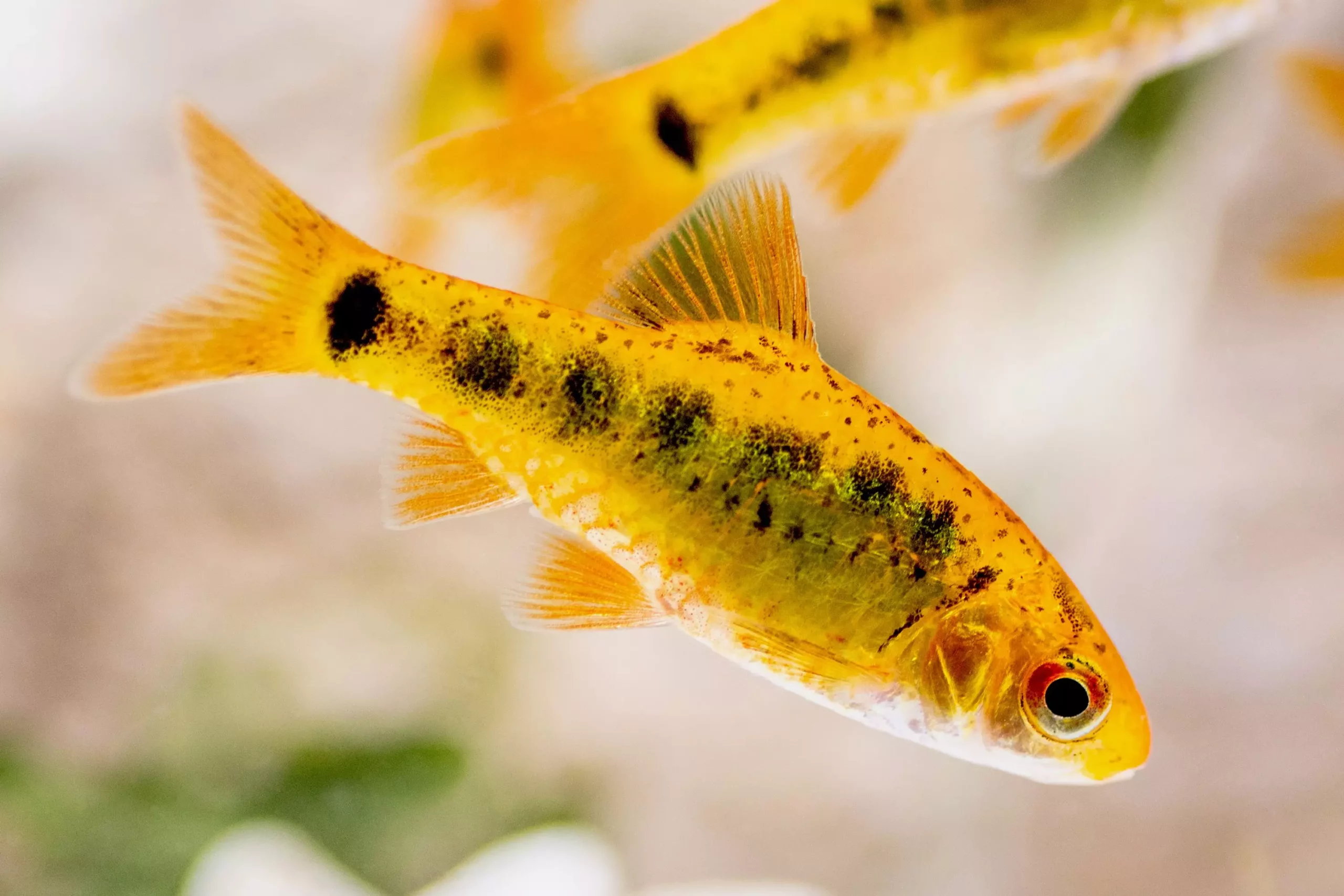Barb fish are a vibrant and popular choice among aquarium enthusiasts for their lively demeanor and beautiful appearances. This article delves into several popular species within the Barb family, examining their unique features, care requirements, and compatibility to help aquarists make an informed decision when selecting the right Barb fish for their tanks.
Barbs, known for their energetic swimming patterns and vivid colors, have captivated the hearts of aquarists. Their social nature means they thrive in groups, adding a dynamic element to community aquariums. Most Barb species are not only visually striking but also relatively easy to care for, making them ideal for both novice and experienced fish keepers. Given their friendly disposition and varied colorations, species selection becomes essential for fostering a healthy aquatic environment.
The Alluring Black Ruby Barb
One standout species in the Barb family is the male Black Ruby Barb, scientifically known as *Pethia nigrofasciatus*. Notable for its striking deep red hue during breeding season, this species adds a splash of color to any aquarium. The Black Ruby Barb reaches a maximum adult size of approximately 2.5 inches (6.5 cm) and boasts a lifespan of around five years. To ensure proper care, these fish thrive when kept in groups of five or more. They prefer a somewhat acidic pH range of 6.0 to 6.5 and a temperature between 72 to 79 degrees Fahrenheit (23 to 26 degrees Celsius). When housed with other species, it’s best to pair them with peaceful schooling fish, allowing for a harmonious community setup.
Another significant member of this family is the Denison Barb, also known as the Bleeding Eye Barb (*Sahyadria denisonii*). This species can grow up to 6 inches (15 cm) and has a distinctive appearance, often admired for its colorful markings. With a lifespan extending beyond five years, proper tank conditions are crucial. The Denison Barb requires a minimum tank size of 55 gallons, suitable pH levels ranging from 6.8 to 7.8, and temperatures between 60 to 77 degrees Fahrenheit (15 to 25 degrees Celsius). Given their size, they should be kept with similarly sized fish, fostering a peaceful environment.
The Gold Barb (*Barbodes semifasciolatus*) is another popular choice for aquarium enthusiasts, recognized for its hardiness and vibrant golden hue compared to its green counterparts. With a maximum adult size of around 3 inches (7.5 cm) and a lifespan of about five years, these fish are ideal for beginners. They thrive in schools of at least six and can adapt to a broad range of water conditions, with pH levels between 6.0 and 8.0 and temperatures ranging from 64 to 75 degrees Fahrenheit (18 to 24 degrees Celsius). Their calm nature allows them to coexist peacefully with a variety of other fish, enhancing the community setting.
The Rosy Barb (*Pethia conchonius*), reaching sizes up to 6 inches (15 cm), is acclaimed for its adaptability and striking coloration. Known for their easy-going temperament, they are often recommended as an excellent first fish for new aquarium enthusiasts. However, they have a tendency to nip at fins, so care should be taken when selecting tankmates. Ideally suited for tanks with a minimum capacity of 30 gallons, they prefer a stable pH around 6.5 and thrive best in temperatures from 64 to 72 degrees Fahrenheit (18 to 22 degrees Celsius).
The Tiger Barb (*Puntigrus tetrazona*) is perhaps the most recognizable Barb species. Its unique pattern and energetic behavior make it a favorite in many homes. Tiger Barbs can reach an adult size of 3 inches (7 cm) and require special attention due to their nipping behaviors, which can be problematic when housed with slower fish. It’s best to maintain these fish in groups and pair them with active species to mitigate aggressive tendencies. With a lifespan of around six years, they thrive in a pH environment of 6.5 and enjoy temperatures from 68 to 79 degrees Fahrenheit (20 to 26 degrees Celsius).
Selecting the right Barb fish for your aquarium requires careful consideration of their individual needs and compatibility with other species. With options ranging from the vibrant Black Ruby Barb to the majestic Denison Barb, aquarists can create stunning underwater landscapes. Each species offers unique characteristics that contribute to the overall community aquarium experience. When planning your aquatic setup, ensure you provide adequate space and sociable tankmates to promote a thriving ecosystem. By understanding and catering to the specific needs of these lively fish, you can enjoy a flourishing aquarium filled with activity and color.

